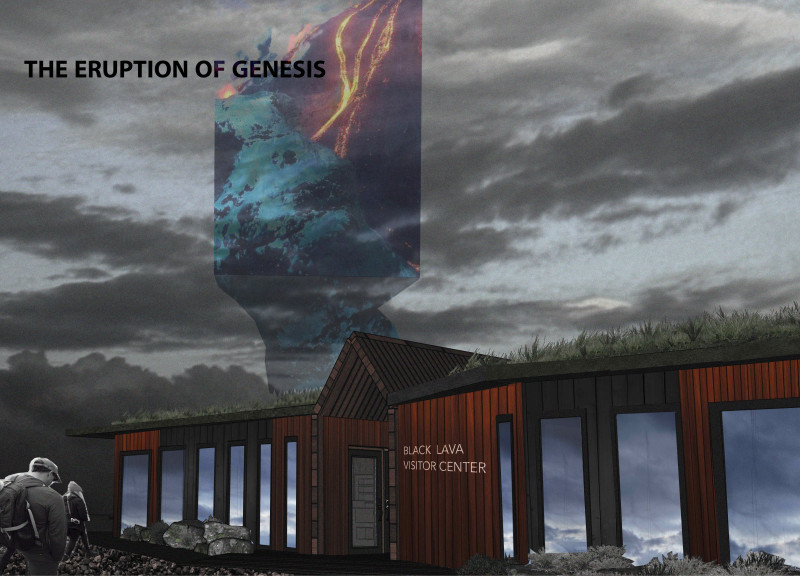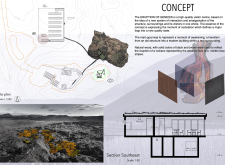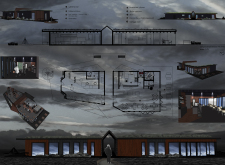5 key facts about this project
The overall structure features a combination of durable materials such as concrete, glass, wood, and steel, each chosen for its specific characteristics and benefits. Concrete forms the primary structural framework, providing thermal mass that enhances energy efficiency. Glass is utilized extensively in the facades to facilitate natural light and visual connectivity with the outside, thus promoting openness and transparency. Wood introduces warmth to the internal spaces, while steel is applied in support structures to ensure stability and flexibility.
The project employs a series of innovative design strategies that differentiate it from conventional interpretations. One notable aspect is the incorporation of passive design principles, which harness natural light and airflow to reduce energy consumption. The layout emphasizes spatial fluidity, allowing for seamless transitions between indoor and outdoor environments, which fosters a connection to nature.
Unique features include [insert specific details, such as green roofs, living walls, or water retention systems] that contribute to the building's sustainability. These elements not only minimize the ecological footprint but also enhance the aesthetic quality of the design, inviting interaction with the natural landscape.
Architectural details play a crucial role in the project's identity. The careful attention to material textures and finishes, along with the precision in lines and proportions, creates a visually cohesive composition. The emphasis on user experience is reflected in the arrangement of communal spaces, such as [insert details about specific areas like atriums or lounges], which are designed to promote social interaction and facilitate collaboration among users.
To gain a deeper understanding of this architectural endeavor, interested readers are encouraged to explore the architectural plans, architectural sections, and architectural designs associated with the project. These documents provide comprehensive insights into the design thinking and ideas that shaped this structure, enhancing appreciation for its contributions within the field of architecture.


























